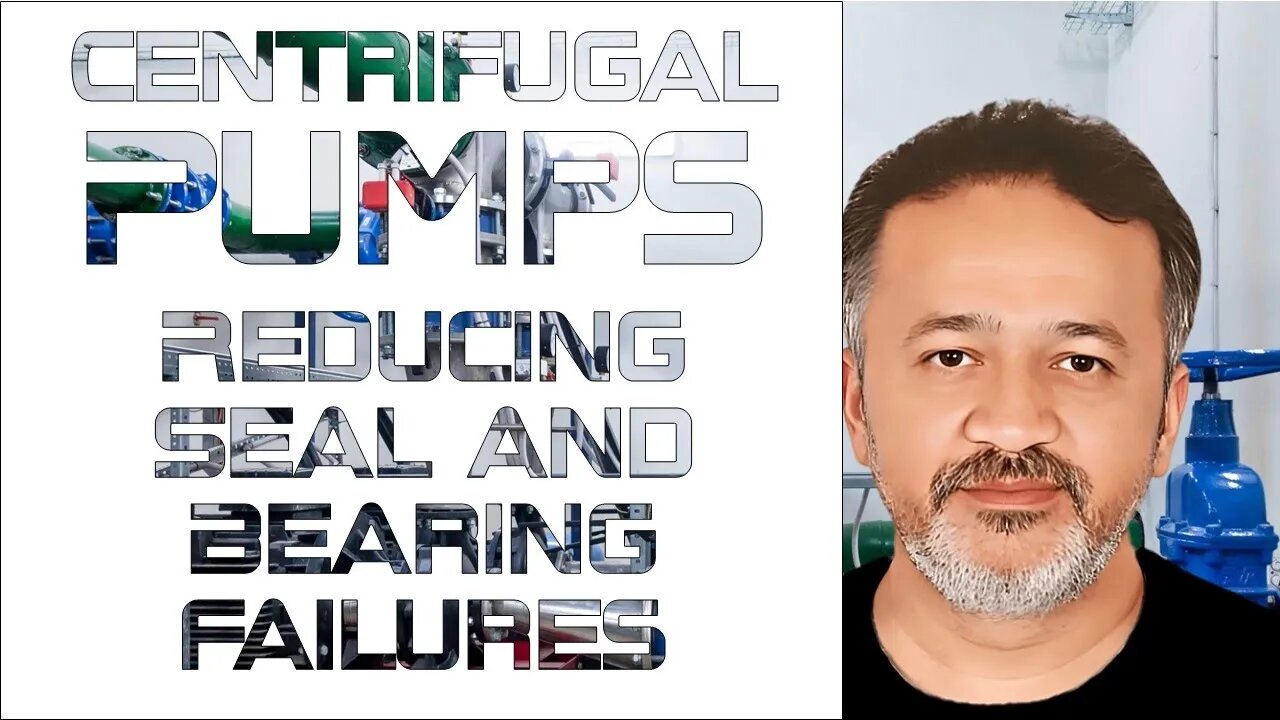Premium Only Content

Sealing the Flow: A Guide to Centrifugal Pump Seals
Sealing the Flow: A Guide to Centrifugal Pump Seals:
Centrifugal pump seals play a critical role in maintaining the integrity of a pump's fluid containment and preventing leaks. They are designed to seal the gap between the rotating and stationary components of the pump, ensuring that the fluid being pumped does not escape and that external contaminants are kept out. Here are some key aspects of centrifugal pump seals:
Function: The primary function of a centrifugal pump seal is to prevent the leakage of fluid from the pump along the rotating shaft. This is essential to maintain the efficiency and reliability of the pump and to prevent environmental and safety hazards.
Types of Seals: There are several types of seals used in centrifugal pumps, including:
Mechanical Seals: These are the most common type of seals and consist of rotating and stationary faces that create a dynamic seal when pressed together.
Packing Seals: Packing seals use rings or braided materials placed around the shaft to create a seal.
Labyrinth Seals: Labyrinth seals use a series of closely spaced fins or teeth to create a tortuous path for fluid, minimizing the risk of leakage.
Magnetic Seals: These seals use magnetic fields to create a seal without direct contact between sealing faces.
Selection: The choice of the seal type depends on the specific requirements of the pump and the characteristics of the fluid being pumped. Factors to consider include fluid type, temperature, pressure, speed, and the presence of abrasives or corrosive substances.
Installation and Maintenance: Proper installation and maintenance of pump seals are crucial to their effectiveness. Mechanical seals, for example, require precise installation to ensure the correct amount of pressure on the sealing faces. Regular maintenance and monitoring help identify and address wear and potential issues.
Seal Failure and Leak Prevention: Seal failure is a common issue in centrifugal pumps and can result from factors like wear and tear, misalignment, or insufficient lubrication. Monitoring for early signs of seal degradation and performing preventative maintenance can help prevent leaks and associated problems.
Environmental Considerations: In some cases, it is essential to choose seals that meet specific environmental regulations, especially in applications where the pumped fluid is hazardous or must be contained to protect the environment.
Secondary Seals and Seal Flush Systems: Many centrifugal pump seals have secondary seals or employ seal flush systems to enhance their effectiveness. These mechanisms help maintain a clean and stable environment around the seal faces, reducing the risk of abrasion and improving overall performance.
Upgrades and Innovations: Advancements in seal technology have led to improved designs and materials that enhance seal longevity and reliability. Innovations such as dual mechanical seals and cartridge seals simplify installation and maintenance.
Centrifugal pump seals are a critical component in ensuring the reliable and efficient operation of these pumps. Proper selection, installation, and maintenance of seals are essential to prevent leaks, extend the lifespan of the pump, and ensure the safety and integrity of the fluid being handled.
-
 20:47
20:47
MTNTOUGH Fitness Lab
19 hours agoDELAYED: Kyrgyzstan Ibex Hunt | A MTNTOUGH Original
2.29K -
 59:50
59:50
Trumpet Daily
19 hours ago $3.18 earnedThe End of the Trans-Atlantic Alliance - Trumpet Daily LIVE | Feb. 17, 2025
5.27K18 -
 52:05
52:05
PMG
10 hours agoWhat Does Freedom Cost? Steven Solomon's On-the-Ground Documentary in Ukraine
2K -
 2:38:54
2:38:54
TimcastIRL
11 hours agoElon Secret Child Scandal ERUPTS, Ashley St. Clair Story Goes Viral w/Bethany Mandel | Timcast IRL
167K107 -
 2:04:52
2:04:52
Kim Iversen
13 hours agoElon's Pumping Out Babies Like They're Tesla Model 3's | EU Panics Over Peace Talks, Wants More War
161K156 -
 1:05:35
1:05:35
Man in America
16 hours agoFort Knox & Trump’s Secret Gold Move—The Financial Reset NO ONE Is Ready For?
106K128 -
 2:21:20
2:21:20
Robert Gouveia
13 hours agoTrump Goes to SCOTUS! Judge CAVES on DOGE? Fani Willis Not Happy!
120K32 -
 20:41
20:41
Stephen Gardner
13 hours ago🔥You Won't BELIEVE What JUST Happened To Don Trump Jr.!!
128K210 -
 58:00
58:00
The StoneZONE with Roger Stone
11 hours agoEuropean Leaders Resist Trump Peace Overtures To Their Own Demise | The StoneZONE w/ Roger Stone
87.3K12 -
 9:29
9:29
AlaskanBallistics
12 hours ago $11.30 earnedWyoming Suppressors and Rifles at Shot Show 2025
107K6